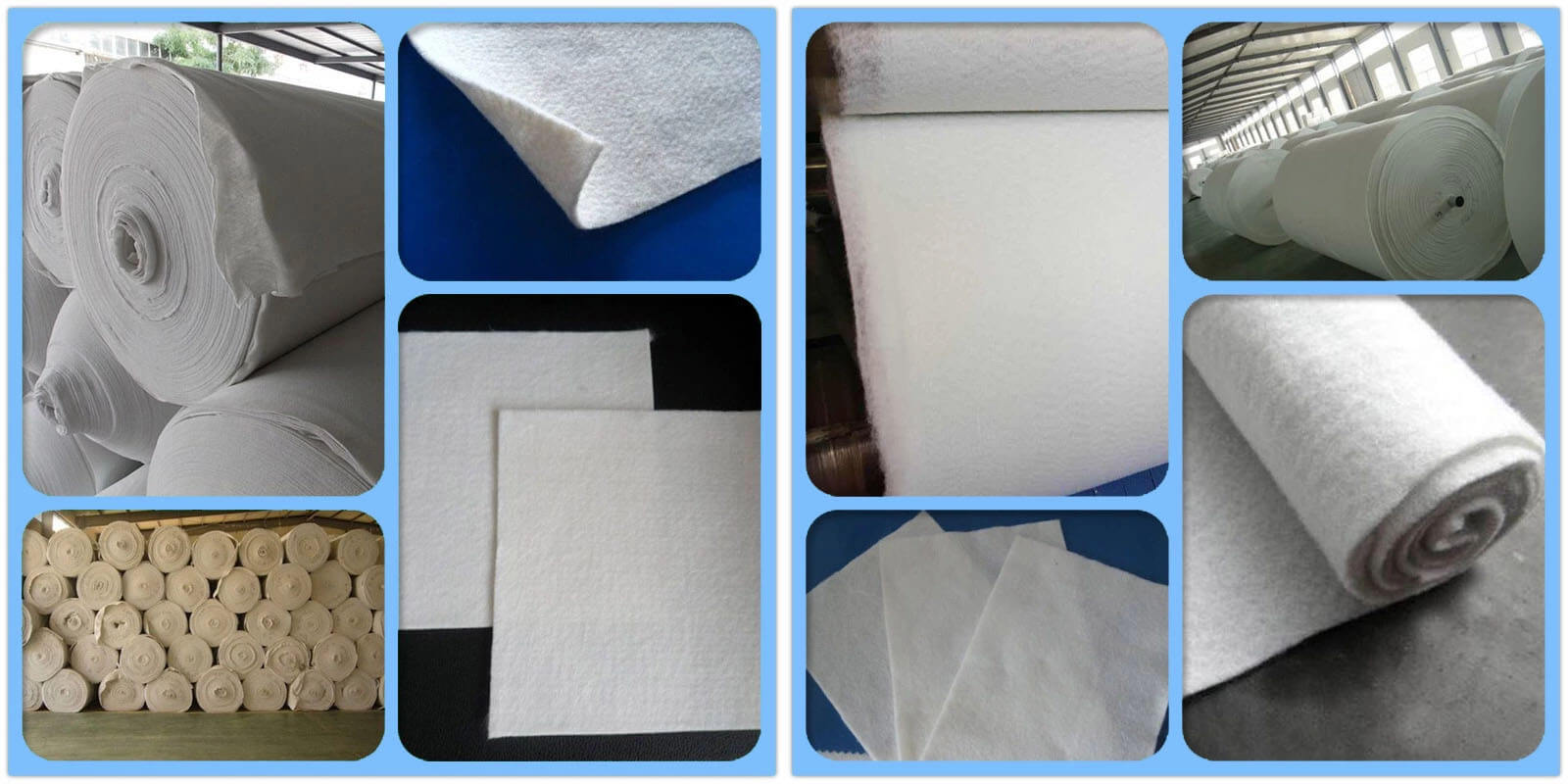Geotextile Laying Construction Technology and Construction Procedures
1. Storage, transportation and handling of geotextiles
Geotextile rolls should be protected from damage before installation. Geotextile rolls should be piled up in a flat and water-free place, the stack height should not exceed the height of four rolls, and the identification sheet of the roll can be seen. Geotextile rolls must be covered with opaque material to prevent UV aging. During storage, the integrity of the label and the integrity of the information must be maintained.
The geotextile roll must be protected from damage during transportation (including on-site transportation from the material storage site to the worksite).
Geotextile rolls that have been physically damaged must be repaired. Severely worn geotextiles cannot be used. Any wholesale polyester nonwoven geotextile that comes into contact with leaking chemical reagents is not allowed to be used in engineering.
2. Laying method of geotextile:
Roll by hand; the surface of the cloth should be flat, and there should be some allowance for deformation. Filament or short-filament geotextiles are usually installed by several methods, such as laps, stitches, and welding. The width of stitching and welding is generally more than 0.1m, and the overlap width is generally more than 0.2M. Geotextiles that may be exposed for a long time should be welded or stitched.
Geotextile stitching: All stitching must be continuous (for example, point stitching is not allowed). Before overlapping, the geotextile must overlap at least 150mm. The minimum stitch distance from the weaving edge (the exposed edge of the material) is at least 25mm.
The most sewn geotextile seams include one line and chain lock chain seam. The thread used for stitching should be a resin material with a minimum tension of more than 60N and have chemical resistance and ultraviolet resistance comparable to or beyond that of geotextiles.
Any “missing needle” on the sewn geotextile must be re-sewn where it is affected.
Appropriate measures must be taken to prevent soil, particulate matter, or foreign matter from entering the polyester nonwoven geotextile factory price layer after installation.
Cloth overlap can be divided into natural overlap, seam or welding according to the terrain and use the function.

In the construction, the geotextile above the geomembrane is naturally overlapped, and the upper geotextile of the geomembrane is welded by steam or hot air. Hot air welding is the first method of connecting filament geotextiles. That is, the connection between two pieces of cloth is instantly heated at high temperature with a hot air gun so that some parts of the cloth are melted, and immediately using a certain external force to firmly bond them. In the case of wet (rainy or snowy) weather, the hot-glue connection cannot be performed, the geotextile should adopt another method-suture connection method, that is, use a special sewing machine for double-thread suture connection, and use chemical-resistant purple
Outer sutures. The minimum width is 10cm when stitching, the minimum width is 20cm during natural overlap, and the minimum width is 20cm during hot air welding.
For seams, use sutures of the same quality as geotextiles, and use sutures that are more resistant to chemical damage and UV light.
The geomembrane is laid after the geotextile is approved by the site supervision engineer.
The geotextile on the geomembrane is laid after the geomembrane is approved by Party A and the supervisor.
The geotextile number of each layer is TN and BN.
The two layers of wholesale polypropylene nonwoven geotextile above and below the membrane shall be buried in the anchoring groove together with the geomembrane at the location where the anchoring groove is located.
3. Basic requirements for geotextile laying:
a. The seam must intersect the slope line; where it is balanced with the foot of the slope or there may be stress, the distance of the horizontal seam must be greater than 1.5m.
b. On the slope, anchor one end of the geotextile, and then lower the coiled material slope to ensure that the geotextile remains tight.
c. All geotextiles must be pressed with a sandbag. The sandbag will be used during the laying and will be retained until the top layer of the material is laid.
